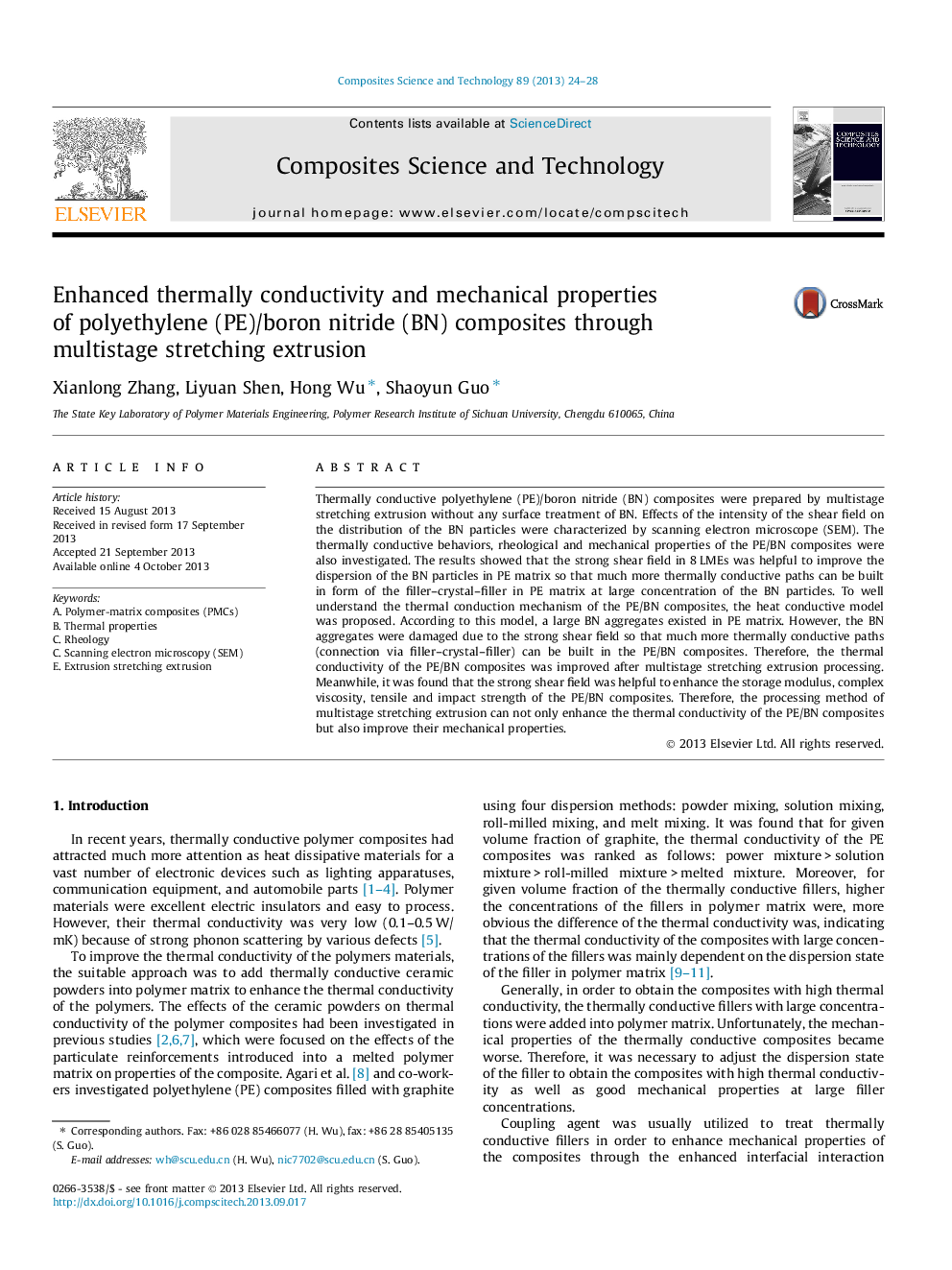| Article ID | Journal | Published Year | Pages | File Type |
|---|---|---|---|---|
| 820433 | Composites Science and Technology | 2013 | 5 Pages |
Thermally conductive polyethylene (PE)/boron nitride (BN) composites were prepared by multistage stretching extrusion without any surface treatment of BN. Effects of the intensity of the shear field on the distribution of the BN particles were characterized by scanning electron microscope (SEM). The thermally conductive behaviors, rheological and mechanical properties of the PE/BN composites were also investigated. The results showed that the strong shear field in 8 LMEs was helpful to improve the dispersion of the BN particles in PE matrix so that much more thermally conductive paths can be built in form of the filler–crystal–filler in PE matrix at large concentration of the BN particles. To well understand the thermal conduction mechanism of the PE/BN composites, the heat conductive model was proposed. According to this model, a large BN aggregates existed in PE matrix. However, the BN aggregates were damaged due to the strong shear field so that much more thermally conductive paths (connection via filler–crystal–filler) can be built in the PE/BN composites. Therefore, the thermal conductivity of the PE/BN composites was improved after multistage stretching extrusion processing. Meanwhile, it was found that the strong shear field was helpful to enhance the storage modulus, complex viscosity, tensile and impact strength of the PE/BN composites. Therefore, the processing method of multistage stretching extrusion can not only enhance the thermal conductivity of the PE/BN composites but also improve their mechanical properties.
